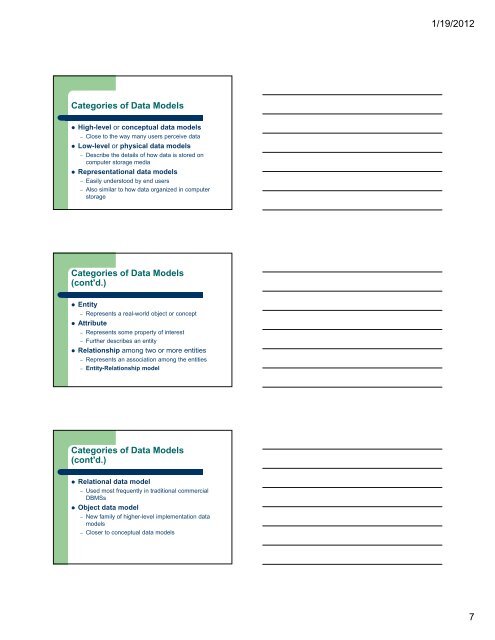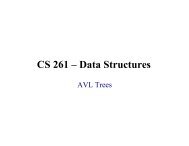Finish Chapter 1 Workers behind the Scene - Classes
Finish Chapter 1 Workers behind the Scene - Classes
Finish Chapter 1 Workers behind the Scene - Classes
Create successful ePaper yourself
Turn your PDF publications into a flip-book with our unique Google optimized e-Paper software.
1/19/2012<br />
Categories of Data Models<br />
• High-level or conceptual data models<br />
– Close to <strong>the</strong> way many users perceive data<br />
• Low-level or physical data models<br />
– Describe <strong>the</strong> details of how data is stored on<br />
computer storage media<br />
• Representational data models<br />
– Easily understood by end users<br />
– Also similar to how data organized in computer<br />
storage<br />
Categories of Data Models<br />
(cont'd.)<br />
• Entity<br />
– Represents a real-world object or concept<br />
• Attribute<br />
– Represents some property of interest<br />
– Fur<strong>the</strong>r describes an entity<br />
• Relationship among two or more entities<br />
– Represents an association among <strong>the</strong> entities<br />
– Entity-Relationship model<br />
Categories of Data Models<br />
(cont'd.)<br />
• Relational data model<br />
– Used most frequently in traditional commercial<br />
DBMSs<br />
• Object data model<br />
– New family of higher-level implementation data<br />
models<br />
– Closer to conceptual data models<br />
7

















